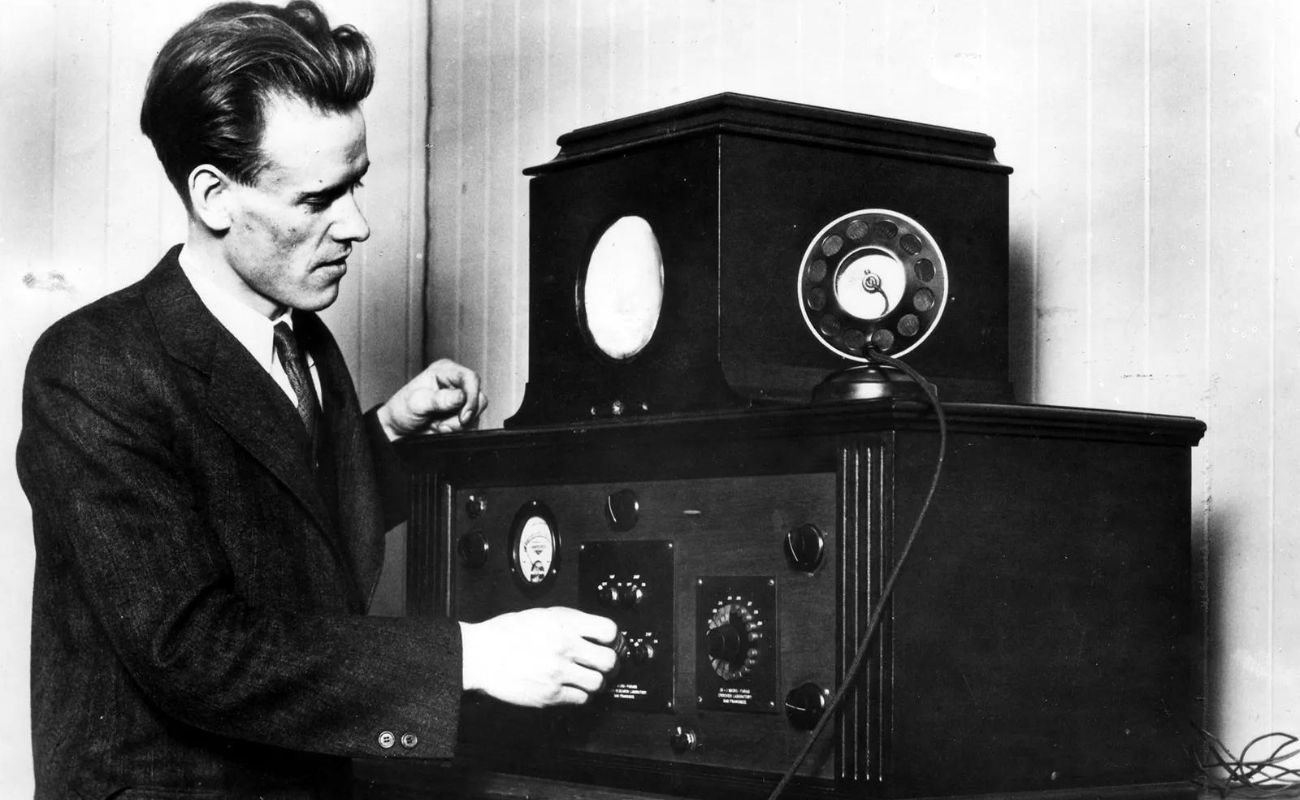Home>Technology>Home Entertainment Systems>When Does The Big Bang Theory Air On Television


Home Entertainment Systems
When Does The Big Bang Theory Air On Television
Modified: January 6, 2024
Discover the airing schedule of The Big Bang Theory on television. Don't miss out on this popular sitcom! Upgrade your home entertainment system today.
(Many of the links in this article redirect to a specific reviewed product. Your purchase of these products through affiliate links helps to generate commission for Storables.com, at no extra cost. Learn more)
Introduction
Welcome to the exciting world of home entertainment systems! If you’re passionate about immersing yourself in the latest movies, TV shows, and music, then you’ve come to the right place. In this article, we will explore the fascinating realm of home entertainment systems, providing you with a comprehensive understanding of the intricacies and possibilities that await you.
A home entertainment system is much more than just a television and a couple of speakers. It’s a complete setup that transforms your living space into a cinematic experience, allowing you to enjoy your favorite content with breathtaking visuals, crystal-clear audio, and unrivaled comfort.
In recent years, home entertainment systems have become more accessible and sophisticated, thanks to advancements in technology. High-definition televisions, smart devices, and wireless connectivity have revolutionized the way we enjoy our entertainment, bridging the gap between the big screen and the comfort of our homes.
Whether you’re a movie buff, a gamer, or a music enthusiast, a well-designed home entertainment system will elevate your experience to new heights. From the comfort of your couch, you can enjoy the rich nuances of a movie’s soundtrack, the immersive landscapes of a video game, or the soul-stirring melodies of your favorite band.
Before you embark on your journey to create your own home entertainment system, it’s essential to understand the different components involved and their roles in delivering an exceptional audiovisual experience. From televisions and projectors to soundbars and surround sound systems, each element plays a critical role in creating a truly immersive entertainment environment.
In the following sections of this article, we will delve deeper into the various aspects of home entertainment systems. We will explore the different options available to you and provide insights into how to choose the right components and optimize their performance. Whether you’re a tech aficionado seeking the latest cutting-edge gadgets or a novice just starting to explore the world of home entertainment, this article aims to be your comprehensive guide.
So, let’s dive into the world of home entertainment systems and unlock the potential of unparalleled audiovisual experiences!
Key Takeaways:
- Embrace the excitement of season premieres and immerse yourself in the regular schedule of television shows to create a captivating home entertainment experience that transcends time and space.
- Navigate time zone variations and appreciate the significance of repeats and reruns to stay connected with your favorite shows, even during off-air periods, as you transform your living space into a personal sanctuary of entertainment.
Season Premieres
One of the most exciting times for fans of television shows is the premiere of a new season. It’s the moment where we get to reunite with our favorite characters and continue following their captivating stories. But when exactly do these season premieres happen? Let’s take a closer look.
The timing of season premieres can vary depending on the network and the show itself. Generally, most TV shows tend to follow a fall-to-spring schedule, with new seasons premiering in September or October and running through May. This has been a longstanding tradition in the television industry, as it aligns with the start of the traditional school year and takes advantage of the increased viewership during the colder months.
However, it’s important to note that not all shows adhere to this schedule. Some shows opt for mid-season premieres, with new episodes airing in the winter or spring. This strategy provides networks with the opportunity to launch new shows and fill gaps in their programming lineup, ensuring a steady stream of fresh content throughout the year.
Another factor that can impact the timing of season premieres is the production schedule of the show itself. Some shows require more time for production and post-production, resulting in delayed premieres or longer breaks between seasons. This is particularly common with shows that have a high production value or complex visual effects.
Furthermore, the recent rise of streaming platforms has brought about a new trend in how shows are released. Rather than sticking to a traditional weekly schedule, streaming services often release entire seasons at once, allowing viewers to binge-watch at their own pace. This “all-at-once” approach has gained popularity among audiences who enjoy the convenience of consuming a complete season without having to wait for weekly episodes.
Ultimately, the timing of season premieres will vary depending on the show and the platform on which it airs. It’s always a good idea to stay updated with the latest news and announcements from networks and streaming services to ensure you don’t miss the premiere of your favorite shows.
Now that we’ve explored the timing of season premieres, let’s turn our attention to the regular schedule of television shows and how you can catch your favorite programs on a weekly basis.
Regular Schedule
Once a TV show premieres, it follows a regular schedule of airing episodes on a weekly basis. This schedule determines the specific day and time that the show will be broadcasted for viewers to enjoy. Let’s take a closer look at how the regular schedule of television shows works.
Most television shows adhere to a consistent weekly schedule, airing on the same day and time each week. This allows fans to mark their calendars and tune in to watch their favorite shows without missing an episode. The regular schedule not only provides convenience for viewers but also helps build anticipation and maintain a dedicated audience base.
Typically, prime time slots are considered the most coveted for television shows. Prime time refers to the hours of the evening when the majority of viewers are available and looking for entertainment. In the United States, prime time is typically from 8:00 pm to 11:00 pm, Monday through Sunday.
During prime time, networks often showcase their most popular shows, as it’s a period when they can attract a larger audience and generate higher advertising revenues. It’s common to see highly anticipated dramas, comedies, and reality shows airing during these hours.
However, not all shows are fortunate enough to secure a prime time slot. Some shows may be scheduled for earlier or later time slots, depending on the target audience or the availability of prime time spots. These shows still have dedicated viewership but may not enjoy the same level of exposure as prime-time programs.
In addition to the specific day and time, it’s important to consider time zone variations when it comes to television schedules. Networks often broadcast shows simultaneously across different time zones to ensure that viewers in each region have access to the program at the same relative time.
For example, a show airing at 9:00 pm Eastern Time would also air at 8:00 pm Central Time, 7:00 pm Mountain Time, and 6:00 pm Pacific Time. This synchronization allows viewers across the country to join in on the shared TV experience, regardless of their time zone.
Once you are aware of the regular schedule of your favorite TV shows, you can mark the days and times on your calendar or set reminders to ensure that you don’t miss an episode. Many cable and satellite providers also offer recording capabilities, allowing you to record shows and watch them at your convenience.
Now that we have a clear understanding of the regular schedule for television shows, let’s explore the specific day and time slots that are common for different genres of programming.
Time and Day
The specific time and day on which a television show airs can vary depending on several factors, including the target audience, genre of the program, and network preferences. Let’s delve into the common time slots and days associated with different types of TV shows.
Prime time, as mentioned earlier, is typically considered the most desirable time slot for television shows. It falls between 8:00 pm and 11:00 pm and is reserved for popular and highly anticipated programs. During prime time, networks aim to attract the largest viewership by featuring a mix of drama, comedy, and reality shows. Many of the most-watched shows air during this period.
Monday and Tuesday nights are known for hosting a variety of dramas, including crime series, medical dramas, and family sagas. These nights are often dominated by serialized storytelling and cliffhangers that keep viewers coming back each week for the next episode.
Comedies, on the other hand, tend to air on Wednesday and Thursday nights. These nights are often referred to as “comedy blocks,” where networks schedule multiple sitcoms back-to-back, creating a night of laughter for viewers. It’s a popular strategy to keep the audience engaged and entertained throughout the evening.
Reality shows, such as talent competitions and game shows, can be found on various nights of the week. Networks often scatter these shows throughout the schedule, aiming to reach different segments of the audience and provide a diverse range of content.
Friday nights are known for being a more relaxed viewing experience, with lighter and feel-good shows taking the spotlight. This is a time when viewers may be looking to unwind after a busy week, and networks offer a mix of dramas, comedies, and reality shows to cater to different preferences.
Weekends, particularly Sunday nights, are often reserved for prestigious dramas that push the boundaries of storytelling and production value. These shows may have complex narratives, rich character development, and high production budgets. Sunday night dramas have become highly popular, attracting dedicated fans and generating buzz on social media platforms.
In addition to the specific time slots, it’s worth mentioning that some shows opt for a specific day of the week that aligns with the theme of the program. For example, crime dramas may choose to air on “Thriller Thursdays” or “Crime Mondays,” capitalizing on the viewers’ expectation for a particular genre on a specific day.
It’s important to note that the scheduling of TV shows can vary between networks, and they may experiment with different time slots and days to find the best fit for a particular show. Therefore, it’s always a good idea to check the TV listings or consult your cable or satellite provider’s schedule to stay updated with the specific time and day for your favorite shows.
Now that we have a better understanding of the time and day aspect of television shows, let’s explore how time zone variations can affect the viewing experience.
The Big Bang Theory aired on television on CBS from September 24, 2007, to May 16, 2019. It originally aired on Monday nights at 8:00 pm, but later moved to Thursday nights at 8:00 pm.
Time Zone Variations
Time zone variations play a significant role in the broadcasting and viewing of television shows, especially in countries with large geographical areas. When a TV show airs at a specific time in one time zone, it may be broadcasted at a different time in another. Let’s explore how time zone variations can affect the viewing experience.
In countries with multiple time zones, such as the United States, Canada, and Australia, television networks strive to ensure that shows are scheduled to air at a consistent relative time across different regions. This helps create a sense of shared television experiences and prevents viewers from experiencing significant delays in accessing new episodes.
For example, a show airing at 9:00 pm Eastern Time in the United States would also air at 8:00 pm Central Time, 7:00 pm Mountain Time, and 6:00 pm Pacific Time. This synchronization allows viewers in each time zone to tune in at what feels like the “same” time.
However, in countries with a single time zone, such as the United Kingdom, the specific airing time of a TV show remains consistent across the entire nation. This makes it easier for viewers to know when to expect their favorite programs without having to consider time zone differences.
Time zone variations can also impact viewers who are traveling or residing in different time zones. For instance, if you are on vacation or on a business trip in a different time zone, you may need to adjust your viewing schedule accordingly. This could mean staying up later or waking up earlier to catch a show at its regular airing time.
Fortunately, with the rise of streaming services and digital platforms, viewers now have more flexibility in accessing their favorite shows regardless of time zone differences. On-demand streaming services allow viewers to watch shows at their convenience, enabling them to catch up on missed episodes or even binge-watch entire seasons without the limitations imposed by traditional broadcast schedules.
Another factor to consider with time zone variations is the airing of live events, such as award shows, sports events, or breaking news. Networks often broadcast these events in real-time across all time zones, ensuring that viewers are able to experience and participate in these events simultaneously, regardless of their geographical location.
It’s essential to stay informed about the specific airing times and time zone considerations for your favorite shows, especially if they are broadcasted in different regions. Consulting TV listings or the official websites of networks and streaming services will provide accurate information about the airing times based on your location or time zone.
Now that we’ve explored the impact of time zone variations, let’s consider the significance of repeats and reruns in television programming.
Read more: Banging Noise In Chimney When Windy
Repeats and Reruns
In the world of television programming, repeats and reruns play a crucial role in providing viewers with additional opportunities to watch their favorite shows. Let’s explore what repeats and reruns are and how they contribute to the television landscape.
A repeat refers to the re-airing of a previously aired episode of a TV show. Networks often schedule repeats during time slots that have traditionally garnered lower viewership, such as late-night or early-morning hours. These repeats allow viewers who may have missed the original airing of an episode to catch up and stay current with the show’s storyline.
Reruns, on the other hand, involve the replaying of entire seasons or past episodes of a show. This can be done either to introduce new viewers to an established series or as a way to keep loyal fans engaged during breaks or hiatus periods. Reruns are especially prevalent during off-air periods when new episodes of a show are not being produced or aired.
The airing of repeats and reruns serves several purposes. First and foremost, they give fans an opportunity to revisit favorite moments, relive memorable episodes, and refresh their understanding of the show’s overall narrative. For long-running shows with complex storylines, reruns offer viewers a chance to catch up on missed episodes or delve deeper into the intricate plot twists.
Repeats and reruns also enable networks to maximize their investment in popular shows. By re-airing episodes, networks can extend the exposure and viewership of a series, potentially attracting new fans who may have missed the initial run. Additionally, reruns can serve as a form of promotion for upcoming seasons, generating renewed interest and anticipation among dedicated viewers.
Repeats and reruns have become even more prevalent with the advent of streaming platforms and on-demand services. These platforms often feature entire series collections, allowing viewers to binge-watch their favorite shows from start to finish at their own pace. This accessibility ensures that fans can rewatch beloved episodes or discover new gems long after the shows have concluded their initial run.
For viewers, repeats and reruns offer flexibility in their TV-watching habits and provide an opportunity to enjoy their favorite shows when they may have missed them the first time around. It’s also a chance to introduce friends or family members to shows they may have overlooked previously.
Networks often announce the scheduling of repeats and reruns in advance, allowing viewers to plan their TV-watching accordingly. Television listings and official network websites are reliable sources of information to stay updated on when your favorite shows will be re-aired or rerun.
Now that we’ve explored the significance of repeats and reruns, let’s turn our attention to the off-air periods that shows often experience.
Off-Air Periods
Off-air periods refer to the periods of time when a TV show is not actively producing or airing new episodes. These breaks can occur for various reasons and can range from a few weeks to several months. Let’s take a closer look at why shows experience off-air periods and how viewers can navigate these breaks.
One common reason for off-air periods is the production timeline of a TV show. Creating high-quality episodes takes time and involves various stages, including writing, pre-production, filming, post-production, and editing. These processes can be complex and time-consuming, often requiring weeks or even months to complete for each episode.
During off-air periods, production teams are working behind the scenes to develop and perfect the upcoming episodes. This includes writing new scripts, scouting locations, casting new characters, shooting scenes, and editing the footage. The goal is to ensure that the show maintains its level of quality and engages viewers with compelling storylines and captivating performances.
In addition to production timelines, off-air periods can also occur due to scheduling considerations or external factors. For instance, shows may take breaks to accommodate holidays or major events that may disrupt regular programming. This allows networks to strategize their lineup and ensure that certain shows align with specific seasons or special programming events.
External factors such as actor availability or unforeseen production delays can also contribute to off-air periods. In situations where lead actors have other commitments or conflicts arise during the production process, shows may need to go on hiatus until all the necessary resources and personnel are available to resume filming.
Off-air periods can be a bittersweet time for fans eagerly awaiting new episodes. However, during these breaks, networks often fill the gap with repeats, reruns, and special programming events to keep viewers engaged. This can be a great opportunity for fans to catch up on missed episodes, revisit favorite moments, or explore other shows that capture their interest.
For viewers, managing off-air periods involves staying informed about the show’s return date and any updates or announcements from the network or showrunners. Following official social media accounts and subscribing to newsletters are effective ways to stay up-to-date with the latest news and developments regarding your favorite shows.
During off-air periods, many fans engage in discussions and speculation about upcoming episodes, storyline developments, and character arcs on online forums or fan communities. This allows viewers to connect with fellow fans and share their excitement and anticipation for the show’s return.
Off-air periods also present an opportunity to explore new shows and genres. It’s a chance to broaden your TV-watching horizons and discover other series that may captivate your interest. Many streaming platforms offer a wide range of options, from classic shows to new releases, allowing viewers to expand their entertainment repertoire.
So, while off-air periods may cause a temporary pause in the airing of new episodes, they also offer opportunities for fans to delve deeper into their favorite shows, engage with fellow viewers, and discover new content. It’s a time to embrace the anticipation and look forward to the return of captivating storytelling and beloved characters.
Now that we’ve explored the concept of off-air periods, let’s conclude our journey through the world of home entertainment systems.
Conclusion
In the realm of home entertainment systems, there is a captivating world waiting to be explored. From the excitement of season premieres to the enjoyment of a regular schedule, time zone considerations, and the familiarity of repeats and reruns, television shows bring joy and entertainment to our lives.
As technology advances, our options for home entertainment have expanded exponentially. High-definition televisions, smart devices, and streaming platforms have transformed how we consume content, offering unparalleled convenience and access to a vast array of shows and movies.
Creating an immersive home entertainment system involves selecting the right components, such as televisions, projectors, soundbars, and surround sound systems. Each element plays a crucial role in delivering a truly captivating audiovisual experience, allowing us to lose ourselves in the stories and worlds presented on screen.
Understanding the intricacies of television programming, from the timing of season premieres to the regular schedule and the impact of time zone variations, enables us to stay connected with our favorite shows and never miss a moment. Whether it’s tuning in during prime time or catching up on missed episodes through repeats and reruns, television offers a wealth of entertainment possibilities.
Off-air periods may temporarily interrupt the flow of new episodes, but they also provide an opportunity to explore other shows, engage in fan discussions, and indulge in the anticipation of a beloved series’ return. With the availability of streaming services and on-demand platforms, there is always something captivating to watch, even during these breaks.
As we navigate the ever-evolving landscape of home entertainment systems, it’s important to remember that the ultimate goal is to create a space where we can escape into a world of captivating stories and breathtaking visuals. Whether it’s through a surround sound system that immerses us in a film’s rich soundtrack or a high-definition television that transports us to another dimension, the possibilities are endless.
So, embrace the excitement of season premieres, immerse yourself in the regular schedule, overcome time zone variations, appreciate the importance of repeats and reruns, and eagerly await the return of your favorite shows during off-air periods. With a well-designed home entertainment system, you can transform your living space into a personal sanctuary, where the magic of television comes to life.
Now, grab your popcorn, settle into your favorite spot on the couch, and let the world of home entertainment captivate you. The adventure awaits!
Frequently Asked Questions about When Does The Big Bang Theory Air On Television
Was this page helpful?
At Storables.com, we guarantee accurate and reliable information. Our content, validated by Expert Board Contributors, is crafted following stringent Editorial Policies. We're committed to providing you with well-researched, expert-backed insights for all your informational needs.















0 thoughts on “When Does The Big Bang Theory Air On Television”